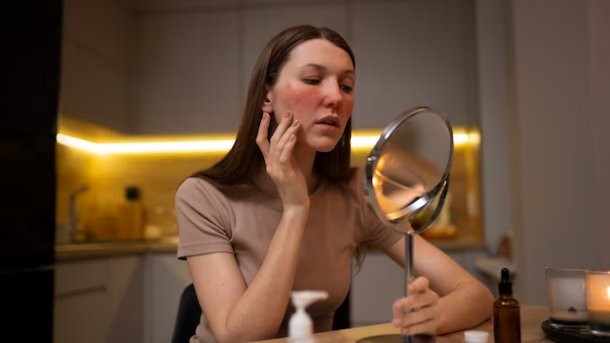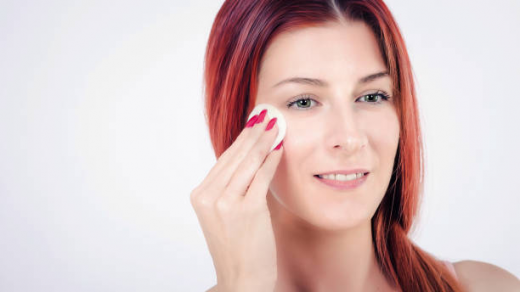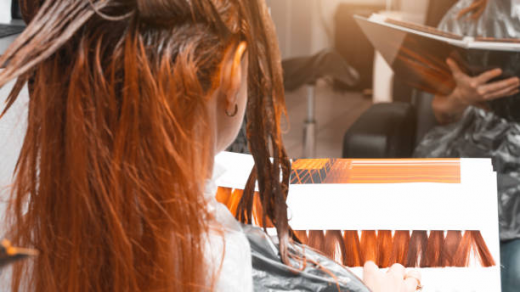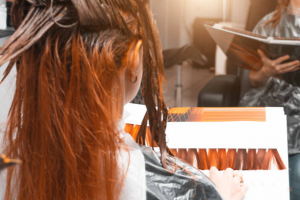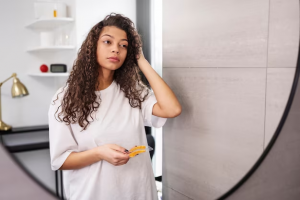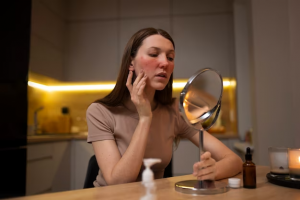Acne, the ubiquitous skin condition that affects millions, is as notorious for its timing as it is for its pesky persistence. Whether gearing up for a significant event or enduring the everyday battle with blemishes, an unwelcome guest often accompanies acne: redness. But fear not, relief from this crimson tide isn’t as elusive as it seems. In response to the burning question—how to reduce redness on the face quickly from acne? The secret lies in both immediate treatments to soothe inflammation and consistent skincare routines that address the underlying issues. This article will unveil timely remedies and long-term strategies to keep your complexion as calm as the serene sea.
Understanding Acne Redness
Acne redness is an inflammatory response, typically an alarm bell rung by your immune system signaling that it’s fighting against pore blockages or bacterial invasion. Skin appears red because blood rushes to the site, delivering white blood cells to combat bacteria and heal the tissue. Acne-related inflammation can result from various culprits, including hormonal fluctuations, stress, environmental irritants, and improper facial care.
The impact of acne on an individual’s self-esteem and daily life cannot be overstated. While red spots and blemishes might be a temporary inconvenience for some, for others, they represent a recurring obstacle to clear skin and confidence. Spotting the different types of redness can aid in treatment. For instance, post-inflammatory hyperpigmentation differs from the redness present in a fresh pimple, and thus, both conditions require tailored approaches.

Immediate Remedies to Reduce Acne Redness
- Cold Compress Application
Applying a cold compress can work wonders to reduce swelling and redness almost instantaneously. The cold temperature constricts blood vessels, dampening inflammation and diminishing the rosy hue. Simply wrap a few ice cubes in a clean cloth and gently press against the affected area for a few minutes, taking breaks to prevent skin damage. - Over-the-counter Treatments
Various products on the market are specifically formulated to tackle the redness associated with acne. Options include:- Topical Cortisone: A mild steroid cream that lessens inflammation swiftly.
- Green-Tinted Primers: These can neutralize red tones whilst prepping the skin for other treatments.
Homemade Remedies and Natural Solutions
Your pantry may hold the key to calming inflamed skin. Homemade masks and topical concoctions, like a blend of honey and oatmeal or a dab of tea tree oil diluted in carrier oil, can provide anti-inflammatory and antibacterial benefits. Aloe vera, known for its soothing properties, is ideal for gentle redness relief. However, ensure these natural remedies are suitable for your skin type before liberal application.
| Ingredient | Benefit | Directions |
|---|---|---|
| Oatmeal | Soothing and moisturizing; helps reduce irritation | Mix with water to create a paste, then apply to the face. Leave for 10 minutes and rinse. |
| Honey | Antibacterial and anti-inflammatory | Apply a thin layer directly on the skin, allow it to sit for up to 20 minutes, then rinse. |
| Tea tree oil | Antiseptic properties that can help disinfect pores | Add a couple of drops to a carrier oil before applying to spots. |
| Aloe Vera | Soothing; anti-inflammatory; aids in healing | Apply the gel directly to the red areas and leave overnight. |
Tips for applying these remedies include gentle application to avoid further skin irritation, and patch testing is always a wise precaution. Regular use, tailored to your skin’s reaction, can contribute significantly to reducing redness over time.
Long-Term Strategies for Managing Acne Redness
Consistency is king in the realm of skincare. Developing a daily skincare routine that includes cleansing, moisturizing, and applying sunscreen protects the skin from further damage and keeps inflammation at bay. Keeping the skin well-hydrated and free from irritants can diminish the frequency of flare-ups, making redness less of an overall concern.
Diet, too, plays a role in skin health. A nourishing diet rich in omega-3 fatty acids, antioxidants, and low in refined sugars could potentially reduce inflammation throughout the body, including the skin. And don’t forget the power of hydration—drinking plenty of water supports the skin’s elasticity and overall healing capacity.
Let’s not overlook the arsenal of professional treatments available. For stubborn or severe cases, procedures like chemical peels, laser therapy, or even prescription medications can offer relief and reduce the appearance of redness from acne. Before seeking these options, it’s best to consult with a dermatologist who can recommend the most suitable treatment based on individual conditions and skin types.

Make-Up Tips to Conceal Acne Redness
- Selection of Right Products
- Choose non-comedogenic and hypoallergenic products that won’t clog your pores or cause further irritation.
- Opt for a green-tinted concealer to counteract redness before applying your foundation.
- Mineral-based powders or foundations can provide coverage without feeling heavy or worsening acne.
- Technique for Application
- Always start with a clean and moisturized face to ensure smooth application.
- Use a beauty sponge or brush to gently dab on the concealer and foundation, avoiding rubbing or dragging the skin.
- Set your makeup with a translucent setting powder to ensure it stays put throughout the day.
For those with sensitive skin, it’s crucial to be choosy about ingredients. Fragrance-free and paraben-free products are less likely to trigger an adverse reaction. And always remember to remove your makeup at the end of the day with a gentle cleanser to keep your skin clear and allow it to breathe.
Conclusion
Reducing redness from acne is a multidimensional endeavor—one that requires short bursts of targeted treatment and a dedicated, long-standing skincare regimen. It’s essential to listen to your skin and respond to its needs with kindness and patience. With the immediate remedies and the long-term strategies laid out in this guide, coupled with tactful make-up application, you not only set the stage for a clearer, calmer complexion but also embrace a routine that nurtures your skin day in and day out.
Remember, while these tactics offer respite, each skin is unique. Patience and consistent care are your allies. And while the quest for instantaneous results is understandable, the most effective approach is often a combination of immediate management and preventive care.

FAQs
- Q: How long does it take for the redness from acne to go away naturally? A: The time it takes for acne redness to fade can vary widely depending on the severity of the breakout and your skin’s natural healing process. It could take anywhere from a few days to several weeks. Consistent skincare and avoiding irritation can expedite the process.
- Q: Can diet really make a difference in reducing acne redness? A: Yes, diet can influence inflammation in the body and skin. Foods rich in antioxidants and omega-3 fats can help reduce inflammation, while a diet high in sugars and dairy may exacerbate acne in some people.
- Q: Is it okay to use ice directly on acne to reduce redness? A: It is not recommended to apply ice directly to the skin as it can cause frostbite and damage the skin barrier. Instead, wrap ice in a cloth before application, and limit each session to a few minutes at a time.
- Q: Can stress cause acne redness to worsen? A: Stress can increase the production of hormones that trigger oil production, which can exacerbate acne and its associated redness. Finding effective stress management techniques could potentially improve your skin’s condition.
- Q: How often should I apply topical treatments to reduce acne redness? A: Always follow the directions on over-the-counter products or advice from a dermatologist. Overuse can irritate and dry out the skin, leading to more redness. Generally, once or twice a day is sufficient for most treatments, unless otherwise instructed.
